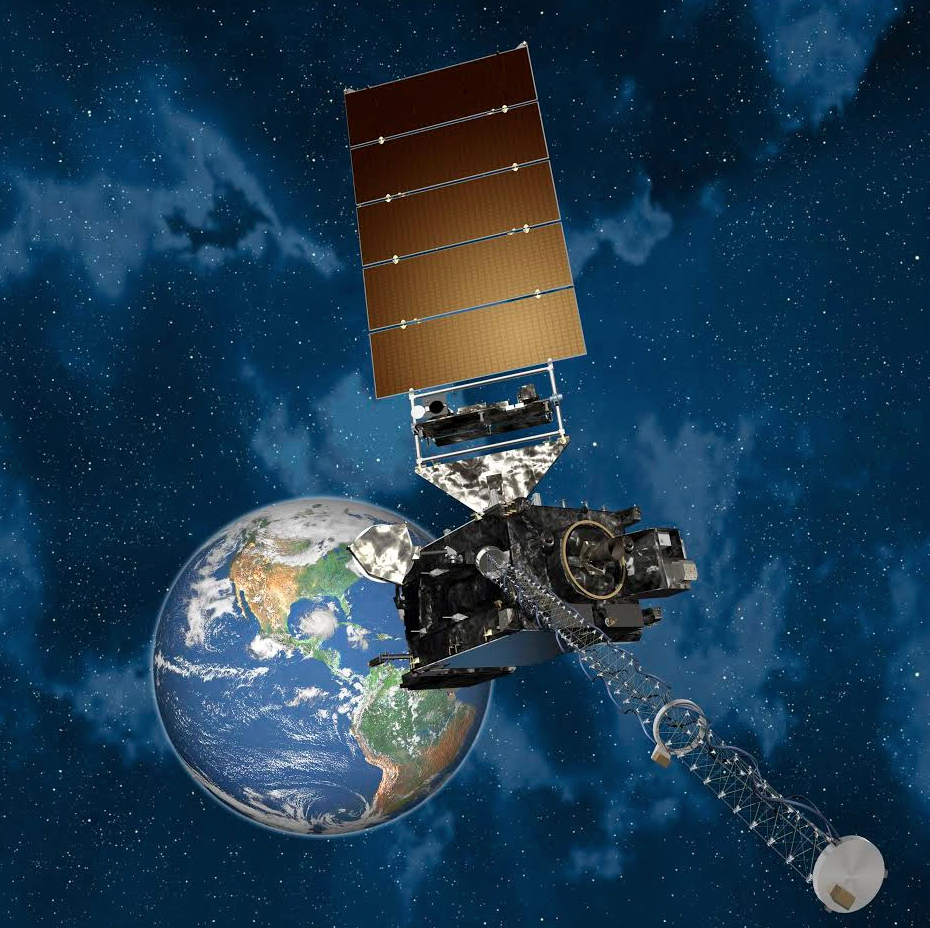[SatNews] "Together these tools will improve NOAA's ability to observe terrestrial and space weather from geostationary orbit in near real-time..."
Four of the six instruments that will fly on the first Geostationary Operational Environmental Satellite R-Series (GOES-R) were delivered to Lockheed Martin in Denver for integration onto the spacecraft bus this month. This marks the beginning of a new phase in the development of the GOES-R satellite scheduled for launch in early 2016.

Geostationary Operational Environmental Satellite R-Series (GOES-R) spacecraft. Credit:Lockheed Martin
The instruments are: the Advanced Baseline Imager (ABI), Solar Ultraviolet Imager (SUVI), Extreme Ultraviolet and X-ray Irradiance Sensors (EXIS), and the Space Environment In-Situ Suite (SEISS). ABI is the primary instrument that will fly on the GOES-R Series satellites and is responsible for imaging Earth's weather, oceans and environment using 16 different spectral bands. SUVI, SEISS, and EXIS together provide observations of the sun and space weather, including coronal mass ejections, solar flares and ion fluxes that can disrupt communication and navigation systems and create radiation hazards.
"Together these tools will improve NOAA's ability to observe terrestrial and space weather from geostationary orbit in near real-time," said GOES-R System Program Director Greg Mandt. "These deliveries, and the start of integration with the spacecraft bus, demonstrate the continued strength of the program as it moves towards launch in 2016."
The remaining two instruments that complete the GOES-R Series Program payload are the Magnetometer and Geostationary Lightning Mapper. Both instruments are scheduled for delivery later this year. Once the instruments arrive at the Lockheed Martin facility in Denver, they will be integrated onto the spacecraft alongside the first four instruments.
NOAA manages the GOES-R Series Program through an integrated NOAA-NASA office, staffed with personnel from both agencies and located at NASA's Goddard Space Flight Center in Greenbelt, Md. For more information about NOAA's Satellite and Information Service visit www.nesdis.noaa.gov. For more information about GOES-R visit www.goes-r.gov.
NOAA's mission is to understand and predict changes in the Earth's environment, from the depths of the ocean to the surface of the sun, and to conserve and manage our coastal and marine resources. Join us on Facebook, Twitter, Instagram and our other social media channels.
For additional information about the GOES-R Series Program please visit www.goes-r.gov.

